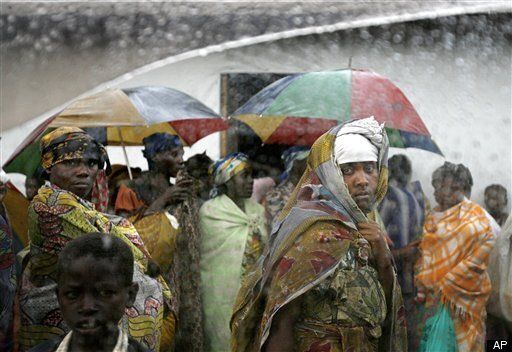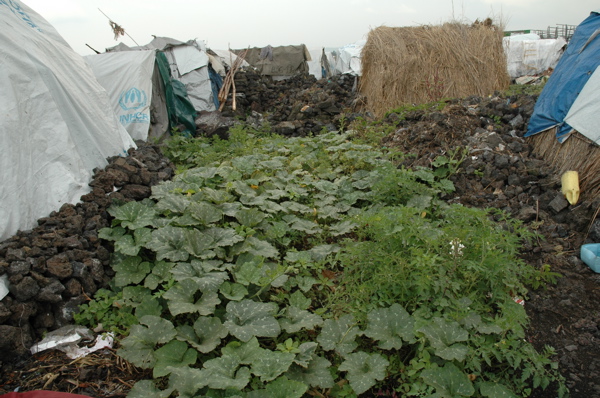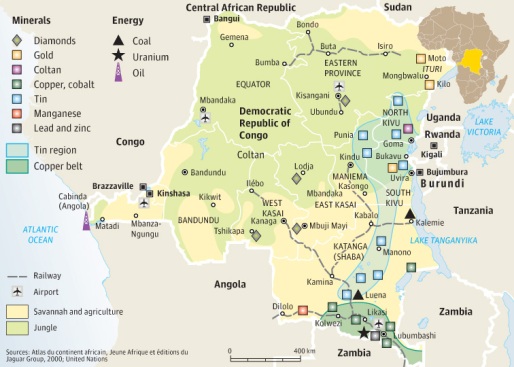
"Sarcasm, sarcasm, the Devil's weapon." ~~ Jane Trahey
Less than 24 hours after the U.S.-based Committee to Protect Journalists sent an open letter to Secretary of State Hillary Clinton expressing concern about the safety of three female Congolese journalists covering women's issues in Bukavu, south of Goma, the UN Refugee Agency (UNHCR) issued a press release about "Clowns Without Borders" entertaining children in the IDP camps near Goma. What about Reporters Without Borders? An even more novel idea would be Doctors Without Borders. Frankly, I am not sure how to write about this amazing disconnect. Do we laugh or cry about the search for truth?
Congolese president Joseph Kabila paved the way for a troupe of Spanish Clowns, while thugs and militia rule the Kivus and truth-seeking journalist are threatened. Sending in the clowns will not end this war or the oppression of women and children. Hillary's idea of 3,000 armed women seems the way to go, but there has been no news about whether or not it will happen. Armed clowns protecting journalists? Now that might work.
The three reporters, Delphie Namuto and Caddy Adzuba of U.N.-sponsored broadcasting network Radio Okapi and Jolly Kamuntu of local station Radio Maendeleo are members of the South Kivu's Association of Women Journalists (AFEM), which has trained female journalists and presents radio programs spotlighting women's issues, especially in rural areas. "Just three weeks ago, a radio journalist was murdered in Bukavu, the third reporter killed in the city since 2007, and local investigations have not been thorough and transparent in solving the motives and circumstances of the murders, " CPJ told Clinton.
Namuto, Adzuba, and Kamuntu were named in an anonymous text message sent on September 8 to Namuto:
You have a bad habit of interfering in what does not concern you to show that you are untouchable. Now, some of you will die so that you shut up. We've just been authorized to start with Kadi, then Kamuntu, then Namuto: a bullet to the head.
You might say that the journalists choose their occupation and have to endure the consequences. Rare is the journalist who has not been detained in DRC on trumped up charges, but death threats are another matter. So are the children who are raped, abused and forgotten.
Clowns in the IDP camps will help the children "forget their experiences of flight and violence," the UNHCR release says. Attacking the clowns seems almost too easy, but having been in these camps I cannot help but wonder if the time and energy and money was well-spent. I am certain the clowns were entertaining, if not frightening (my bias here), but the children are so deprived in these camps that my tattoos provided hours of fun for them to explore and touch, not to mention blond Muzunga hair under a baseball cap. Is this kind of exercise really of any value? Give the clowns a job. Perhaps digging latrines and cleaning up the mounds of garbage and filth. Laughter only goes so far before it morphs into tears.

Adding to the black comedy of horrors, UNHCR issued another press release within hours of the clown notification which indicated that a questionnaire sent to all the residents of the IDP camps indicated that they "wanted to go home."
The IDP families, much of which comes from the territories of Masisi and Rutshuru, had informed the provincial authorities and the humanitarian community in their desire to return to their villages. Although spontaneous return movements have been observed continuously since January 2009, these movements in greater numbers only began in September after questionnaires about the intentions of returning IDPs have found that the majority of residents in the camps wanted to go home. (Translated from French)
Given the choice of living in a plastic hut, with your baby sleeping on lava, the stench of garbage everywhere and disease stalking the camps like a leopard looking for its prey, I doubt that a questionnaire was needed to indicate people just want to go home to plant their crops. We observed pitiful plots of squash and tomatoes planted in the crevices of lava while at Mugunga II in January.

IDPs themselves filled in forms indicating a possible date of return and a special area of return. UNHCR and its partners continue to provide certificates of voluntary return of all IDPs wishing to return home. These certificates will also facilitate the reintegration assistance in the areas of return. Several UN agencies jointly provide partners with assistance packages to return, UNHCR distributed and not with a ration of food for 3 months provided by WFP and a kit of non-food items (placemats, plastic sheeting for temporary shelter, sleeping mattress, blankets, buckets, soap, etc..) (Translated from French)
I know UNHCR is trying, but the situation in DRC remains such a mess that it is difficult to resist sarcasm. There is also the real concern, and reports from the ground in Goma support this, that the displaced are in some instances being forced to "go home."
Real investigative reporters disguised as clowns? The State Department might want to consider that option. (Forgive me, Secretary Clinton.)
In fairness to UNHCR, spokesperson Francesca Fontanini has been very willing to directly answer questions about the movement of the internally displaced. She has a job that cannot be rightfully criticized by sarcastic journalists. I hope she does not take me off her mailing list.
The current return of IDPs from the camps in and around Goma to their home is voluntary (80% out of 65,000 opted for voluntary return). This is an IDP-driven process, in that the IDPs themselves have informed the Government (GNK) and humanitarian agencies of their intention to return. Some of the factors influencing the return at this particular time include: (i) the fact that the cultivating season is approaching and (ii) that school will soon begin. It is important to note that there has already been significant return movement from the camps in Goma. The camp population in Goma has decreased from some 140,000 individuals in November 2008 to 65,000 individuals in mid-August 2009.
Refugees International has a different take on the situation, suggesting that the situation in both North and South Kivu Provinces remains insecure.

Image: Map of Kivus with mining interests
The Kimia II operations continue to cause new displacements in parts of North Kivu, including isolated and inaccessible areas such as western Masisi and Walikale territories. Meanwhile, a lull in the fighting in areas such as Rutshuru territory has also led to an increase in the number of people returning home, as they can access their lands for farming. However, not all return areas are fully secure and many return communities include newly displaced people, the majority of whom live with host families.
While people are slowly returning to certain areas, this can not be taken as an indication of lasting peace in the region, particularly given the fact that many people have been displaced at least two or three times previously. The cycles of violence in eastern Congo have continued relentlessly for more than a decade, and the Kimia II operations are still creating insecurity in North Kivu. For many displaced people, the armed group that forced them to flee in the first place has been replaced by another armed group which is causing new displacements and preventing returns.
If reprisal attacks by the FDLR in North Kivu are to be any guide, in South Kivu, where the FDLR are even more integrated into the local population, the Kimia II operation has the potential to create widespread human rights abuses and displacements.
A woman displaced from Ziralo in Kalehe territory told RI that she fled after her husband and two young grandchildren were killed by the FDLR in July and all the houses in her village were burned down. Other people displaced from Ziralo said women were raped by the FDLR as they fled their homes. As a local official in Uvira territory said, "It's ironic that the army has come to chase the FDLR, and it's the population who flees."
The international community sanctioned the failed intervention of Rwanda in this region earlier this year, and violence increased exponentially.
Don't tempt me with the armed clown analogy.
Resources: UN EXCEL summary of IDP movement since January 2009
North Kivu is a province bordering Lake Kivu in the eastern DRC. Its provincial capital is Goma. South Kivu's provincial capital is Bukavu.
